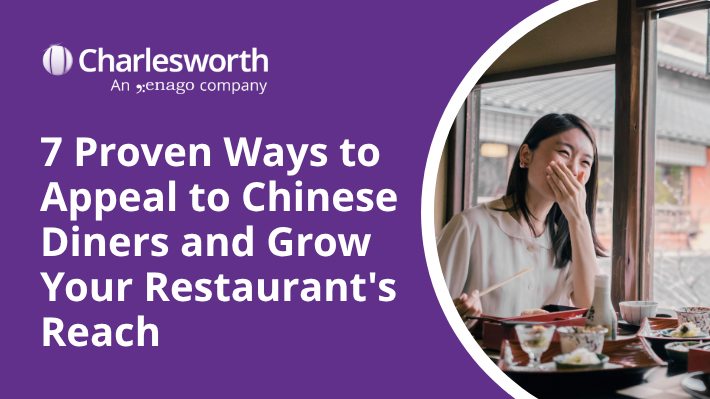7 Ways to Appeal to Chinese Diners and Grow Your Restaurant’s Reach

As the global food scene continues to diversify, restaurants are constantly seeking new ways to expand their reach and increase their customer base. Among the most promising and rapidly growing demographics are Chinese consumers, who are increasingly interested in exploring international cuisine. With China’s expanding middle class, the increasing number of Chinese tourists, and a large diaspora living abroad, there is an enormous opportunity for restaurants to tap into this lucrative market. However, attracting Chinese customers requires more than just offering familiar dishes; it involves an understanding of Chinese food culture, digital habits, and preferences.
1. Embrace Chinese Dining Customs
Understanding Chinese dining culture is essential to appealing to Chinese customers. Meals in China are traditionally a social affair, characterised by communal dining and a focus on sharing. Here are some key aspects to consider when catering to Chinese diners:
- Family-style dining: Chinese diners tend to order a variety of dishes to share among everyone at the table. This contrasts with Western dining norms, where individuals order for themselves. To cater to this preference, offering large portions and family-style platters is a great way to appeal to Chinese customers.
- Fresh ingredients and flavour balance: In Chinese cuisine, there is a strong emphasis on fresh ingredients, seasonal produce, and balancing flavours such as sweet, sour, salty, and bitter. Offering high-quality ingredients, such as fresh seafood or seasonal vegetables, will resonate with Chinese customers who value freshness and authenticity. Indicate geographical indications on the menu, such as ‘Hanyuan Sichuan Pepper’ or ‘Yangcheng Lake Hairy Crab’, to enhance trust and perceived value.
- Regional diversity: Chinese food culture is diverse, with distinct regional variations. For example, diners from Sichuan might prefer spicy dishes, while those from Guangdong may lean towards milder, sweeter flavours. Tailoring your menu to include a variety of regional dishes can make your restaurant more attractive to a broader Chinese audience. For example, a scientifically managed spiciness scale with five levels: 1. Original (No Spice) – Suited for customers from Jiangsu and Zhejiang; 2️. Mild – Preferred by diners from Guangdong and Fujian; 3️. Medium – Based on Hunan and Hubei taste profiles; 4️. Hot – Matches the standard in Sichuan and Chongqing; 5️. Inferno – A challenge-level option, paired with a “Warrior Certificate” and photo wall for brave participants
2. Harness the Power of Chinese Social Media
In today’s digital age, Chinese consumers turn to social media platforms to discover new dining experiences. Platforms like WeChat, Weibo, and Xiaohongshu (Little Red Book) are essential for restaurants aiming to engage Chinese customers. Here’s how to use these platforms effectively:
- WeChat and Weibo: WeChat, one of China’s most popular platforms, offers businesses a way to connect directly with customers through its Official Accounts. These accounts allow restaurants to send updates, promotions, and interact with potential diners. Weibo, on the other hand, is a great platform for amplifying your message and reaching a wider audience through hashtags and trending topics. Posting high-quality images of your food, behind-the-scenes videos, and special offers can drive attention to your restaurant.
- Xiaohongshu (Little Red Book): Xiaohongshu is particularly influential in the food and travel industries. Many Chinese consumers rely on Xiaohongshu for recommendations when looking for new restaurants abroad. By partnering with food influencers (KOLs) on Xiaohongshu, you can increase brand visibility and appeal to an audience eager for new dining experiences. The platform’s focus on visual content makes it perfect for sharing eye-catching photos and videos of your food.
- Encourage Reviews and Word-of-Mouth: Chinese customers place significant value on reviews and recommendations. Engaging with local Chinese review platforms, such as Dianping, and encouraging satisfied customers to leave positive reviews can help establish your credibility and attract more visitors. Positive word-of-mouth on social media platforms can significantly influence dining decisions.
3. Offer Traditional Chinese Dishes or Fusion Menus
When trying to attract Chinese customers, offering dishes that cater to their tastes is crucial. Whether you serve traditional Chinese cuisine or a fusion menu, it’s important to appeal to their palate.
- Authentic Chinese dishes: If your restaurant specialises in Chinese cuisine, make sure to include regional dishes that resonate with Chinese diners. Dishes such as Peking duck, Sichuan hotpot, or dim sum are popular favourites among Chinese customers, and offering them in their most authentic form will attract diners seeking the flavours of home. Quanjude Toronto introduces traditional fruitwood roasting ovens, with a carving chef at each table showcasing the signature 108-slice technique. Servers provide bilingual (Chinese-English) explanations of the “Ten Styles of Duck Wrap Folding”, and guests receive a complimentary zodiac-themed duck-shaped keychain as a souvenir.
- Fusion menus: If you serve international cuisine, incorporating Chinese ingredients or cooking methods into your menu can make your restaurant stand out. For example, you might consider serving Chinese-inspired dishes, such as sushi with Chinese-flavour twists, or offering fusion items like Chinese-style tacos or pasta with a Sichuan spice. At Terra Madre, an Italian restaurant in Sydney, the signature “Mapo Lasagna” blends traditional béchamel sauce with a bold Pixian chili bean and minced meat sauce from Sichuan. This East-meets-West fusion dish has become a standout on the menu, accounting for 28% of total revenue.
4. Incorporate Chinese Culture into Your Restaurant’s Design
Chinese customers not only care about the food but also about the overall dining experience. Creating an atmosphere that respects and reflects Chinese culture can make a big difference.
- Decor: Using a layered approach to spatial storytelling, the front-of-house is designed with modern interpretations of traditional elements. At the entrance, a “bamboo scroll menu wall” features laser-engraved poetic lines of popular dishes, while chandeliers adopt mortise-and-tenon structures, casting shadow projections of “Along the River During the Qingming Festival.” For the private dining rooms, immersive regional themes are applied — for instance, the Jiangnan Room features Suzhou-style kesi silk screens and traditional Suzhou ballad (pingtan) music, creating an atmosphere rich in Chinese cultural heritage.
- Language and Communication: Offering bilingual menus (in both English and Chinese) and signage in Chinese characters can make Chinese customers feel more comfortable. Additionally, training staff to greet customers in Mandarin or Cantonese, or employing bilingual staff, can help create a more inviting experience.
5. Accept Chinese Payment Methods
Chinese consumers are accustomed to using mobile payment platforms, and offering payment options such as WeChat Pay and Alipay can be a game-changer. These payment methods are widely used in China and are increasingly popular among Chinese tourists and expats. By accepting these payment options, you remove a potential barrier to entry for Chinese customers who may prefer using their mobile phones to make payments rather than credit cards or cash.
6. Create Special Promotions During Chinese Festivals
Adopting a high-impact festival marketing strategy, the restaurant creates themed campaigns around traditional holidays. For the Dragon Boat Festival, a special “Zongzi-Inspired Afternoon Tea” is launched, with complimentary mugwort sachets for every purchase. A WeChat mini-game called “Dragon Boat Treasure Race” allows users to earn points, which can be redeemed for free meal vouchers. For Qixi Festival (Chinese Valentine’s Day), a “Red Thread Love Wall” is set up where couples can hang heart-shaped locks after dining. The venue also offers traditional-style couple photography, with final photos encouraged to be shared on Xiaohongshu under the hashtag #ChineseValentinesDay.
7. Prioritise Customer Service
Exceptional service is key to retaining Chinese customers. In Chinese culture, the dining experience is often viewed as a social event, and good service can leave a lasting impression. Train your staff to offer attentive, polite, and efficient service. Adopting quantitative service response management, for example: 1️. Golden 5-Minute Rule – Serve hot towels and tea within 5 minutes of seating; deliver cold appetizers within 5 minutes of ordering; ensure no more than 10 minutes between main courses; 2️. Crisis Response Scenarios – For dish complaints: immediate replacement + head chef apology + complimentary VIP card; for excessive wait times: provide free snack bar access + priority seating in private rooms.
Conclusion
Attracting Chinese customers to your restaurant involves understanding their dining preferences, embracing their cultural values, and engaging with them on their preferred digital platforms. By offering authentic Chinese dishes, creating an inviting atmosphere, accepting their payment methods, and utilising social media, your restaurant can successfully tap into the growing Chinese customer market.
For restaurants looking to grow their brand and attract Chinese customers, Charlesworth can assist in leveraging platforms like Xiaohongshu and other Chinese social media channels, helping you expand your reach and build a stronger presence in this dynamic market.


